08 Spinal Cord Syndromes
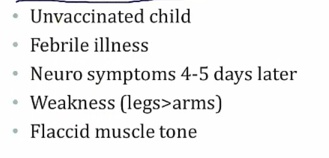
.
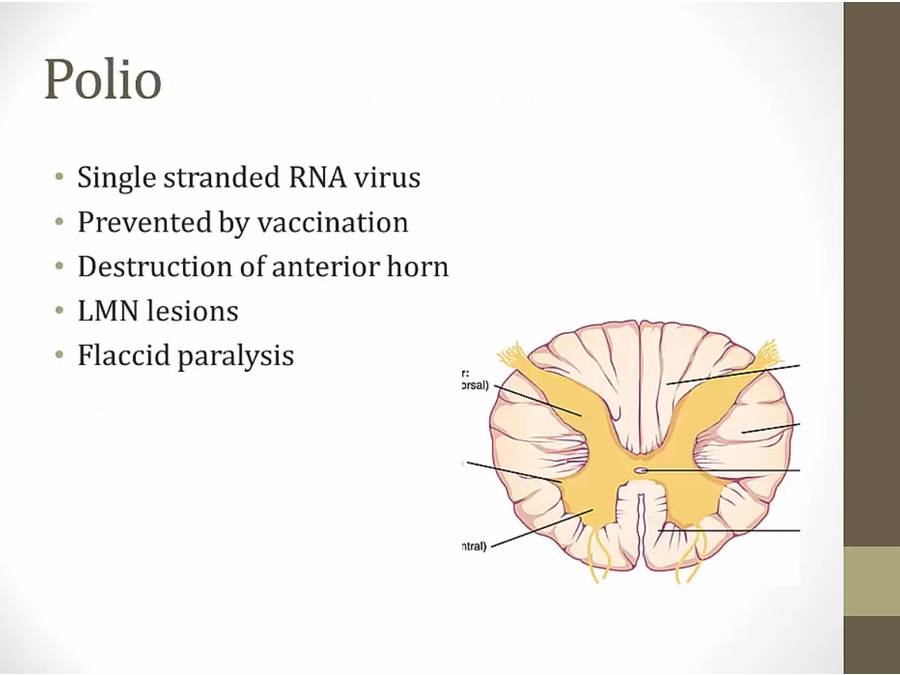
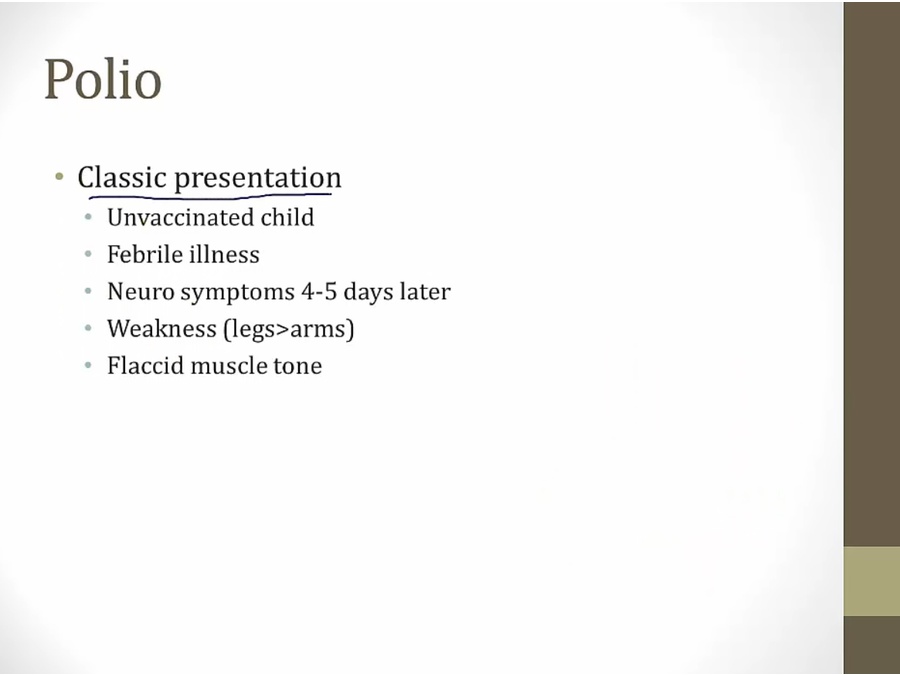
Werdnig-hoffman disease
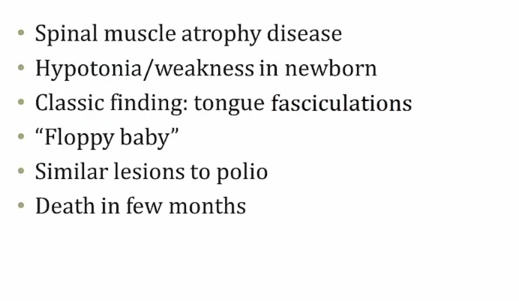
.
- similar to polio without virus
MS
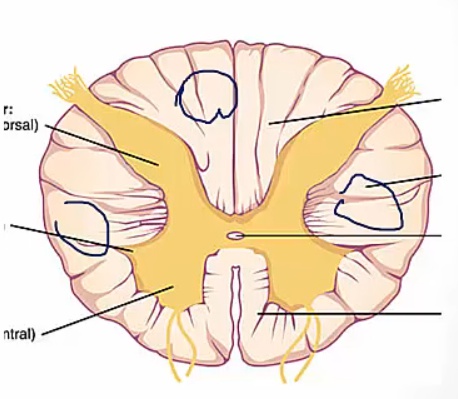
.
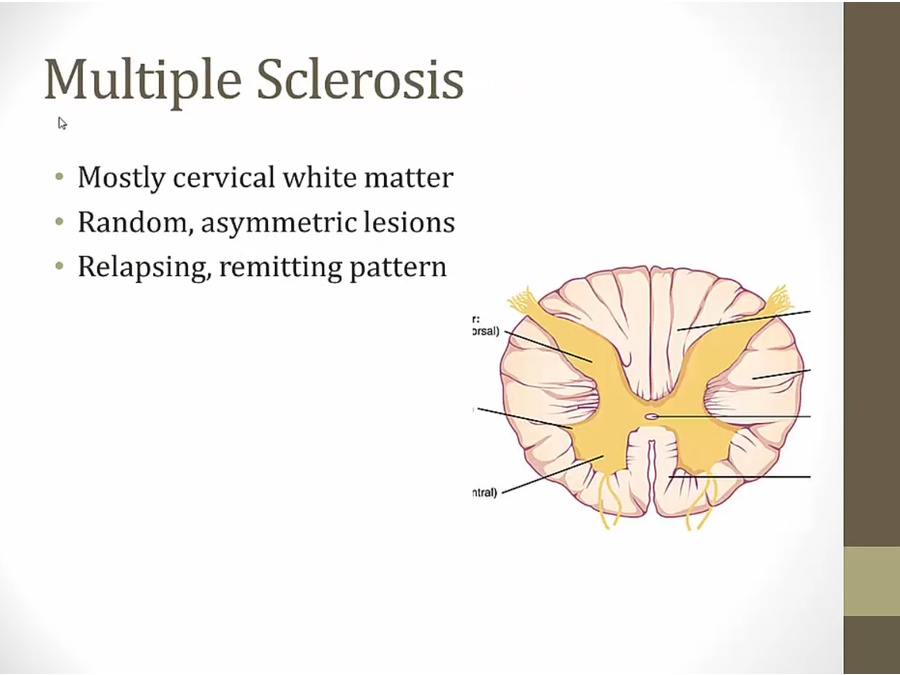
- symptoms in one region of body, go away and come back in another region
ALS
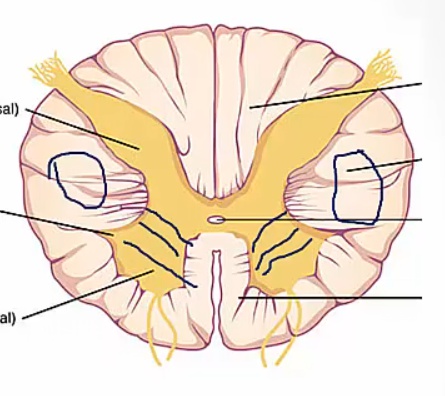
.
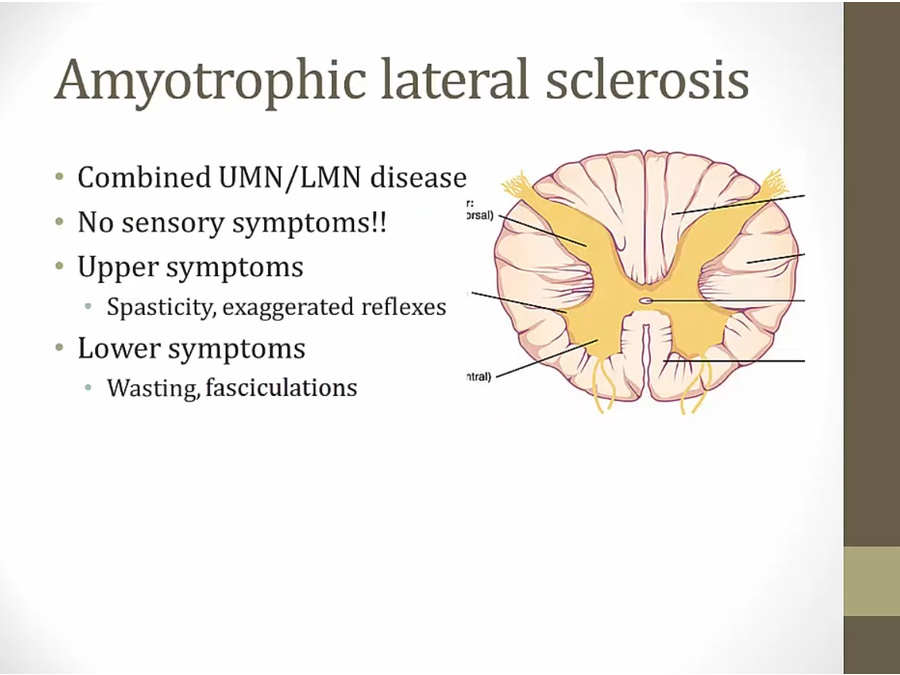
- both lower/upper lost
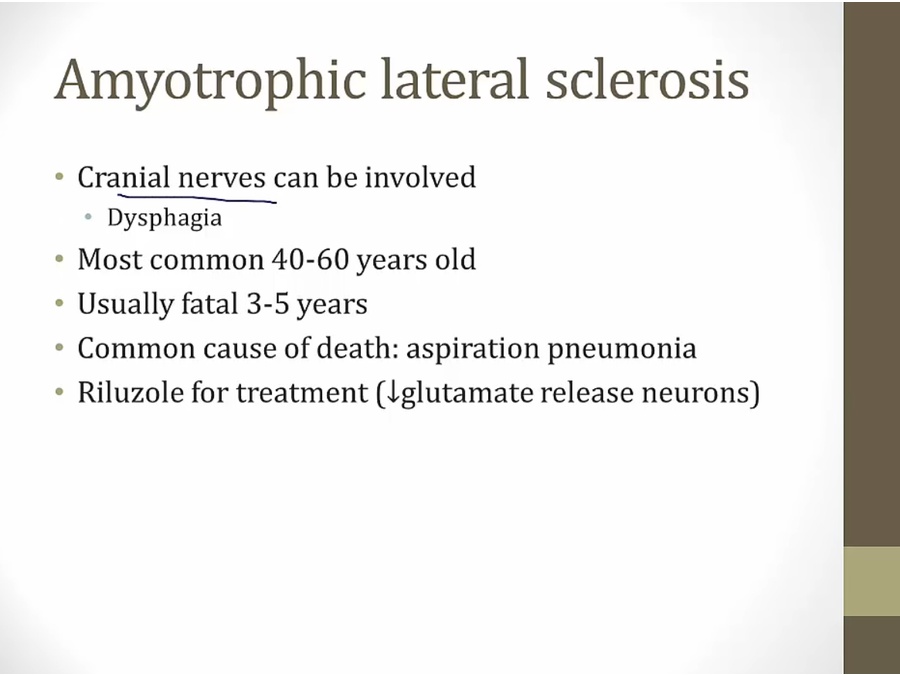
- progressive dysphagia until feeding tube, can't clear aspirations
- free radical scavenger enzyme
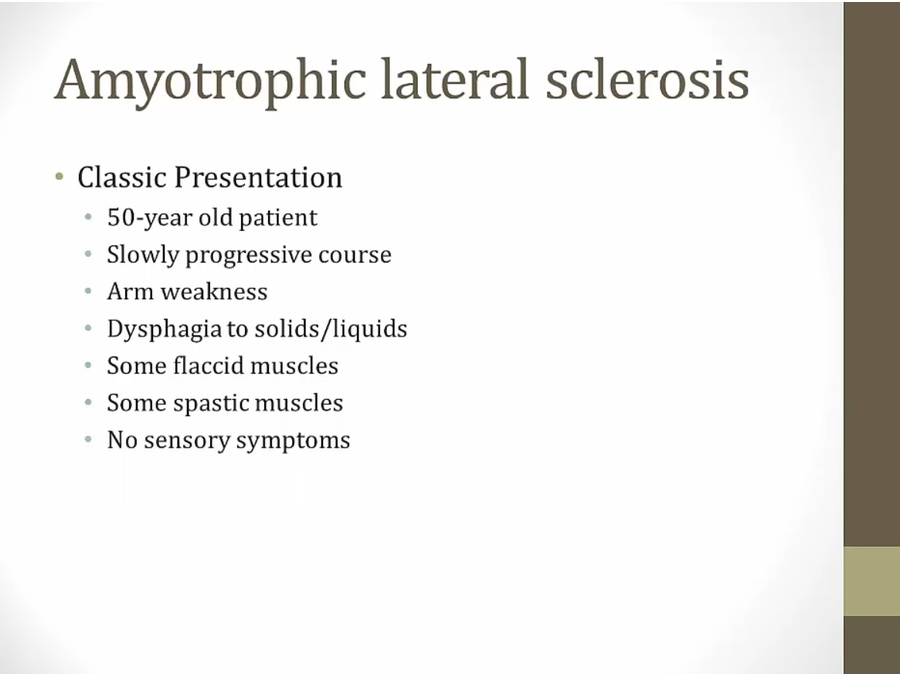
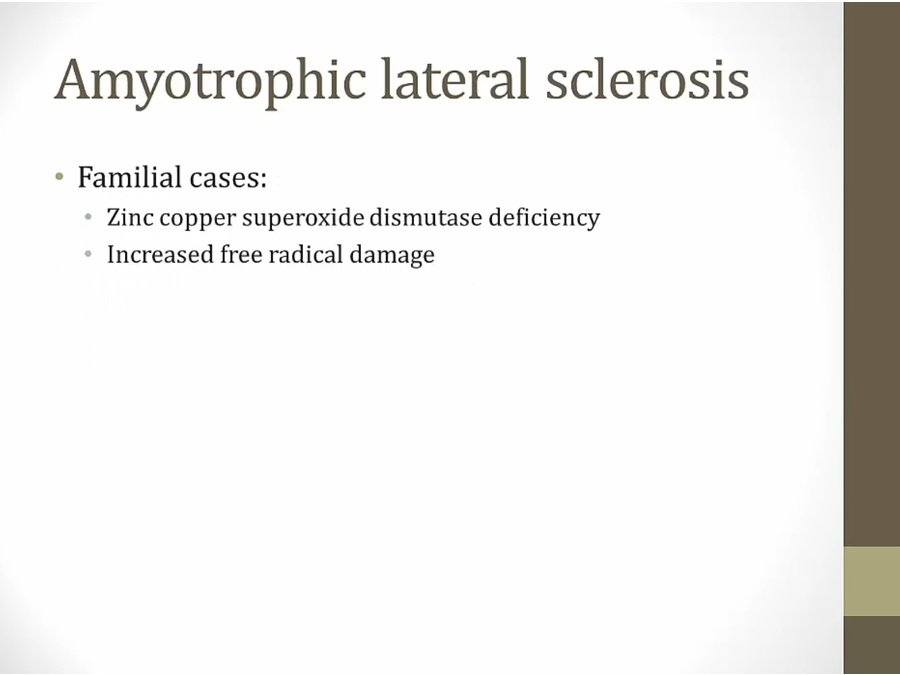
ASA Occlusion
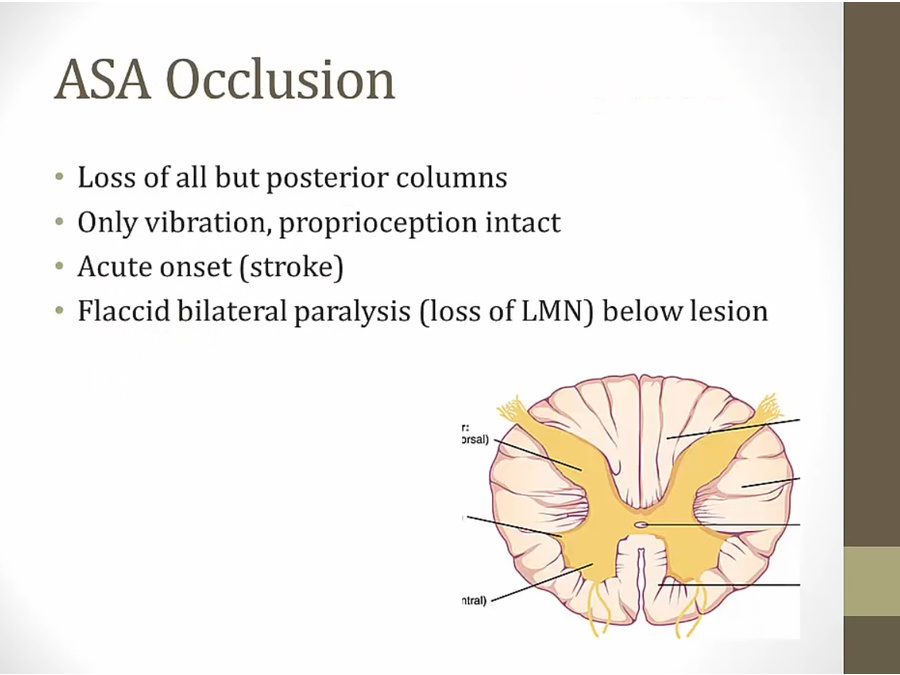
The ASA is particularly dependent on blood supply from the radicular arteries that originate from the thoracic aorta, such as the artery of Adamkiewicz. Thoracic aortic surgery can result in reduced blood flow through the radicular arteries (eg, from aortic cross-clamping and/or systemic hypotension) and consequently lead to anterior spinal cord infarction.
Tabes Dorsalis
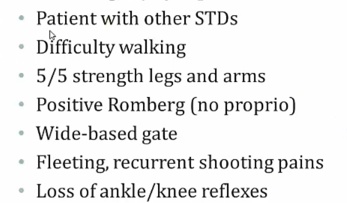
.
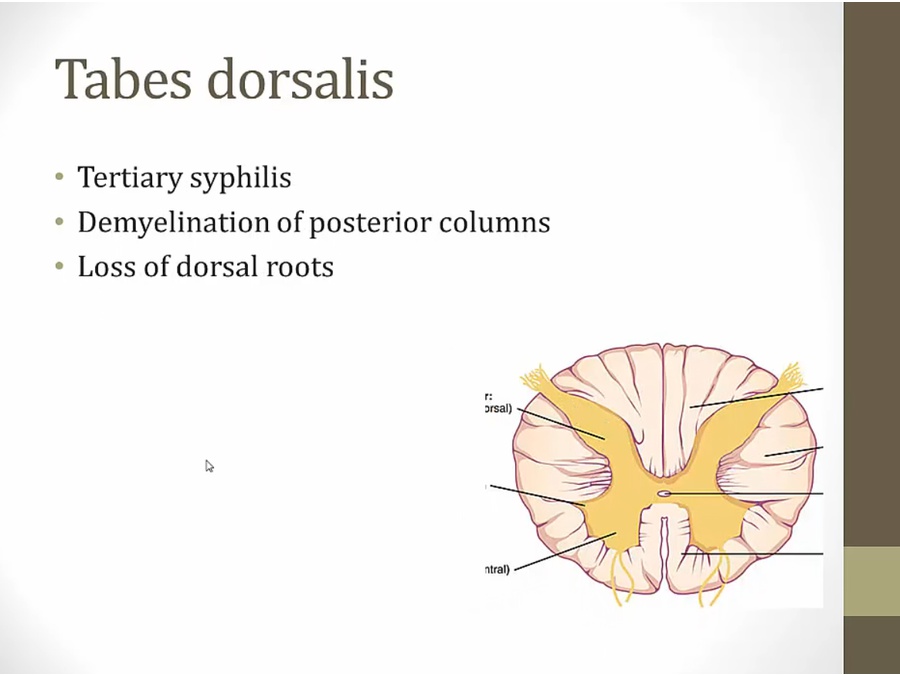
- lose proprioception/balance: ataxic
- also lose dorsal roots: lose reflexes

Syringomyelia
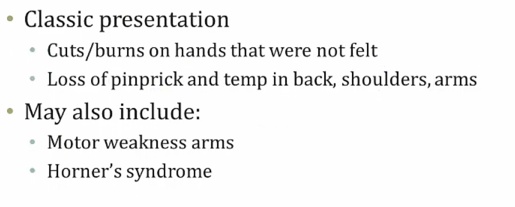
.
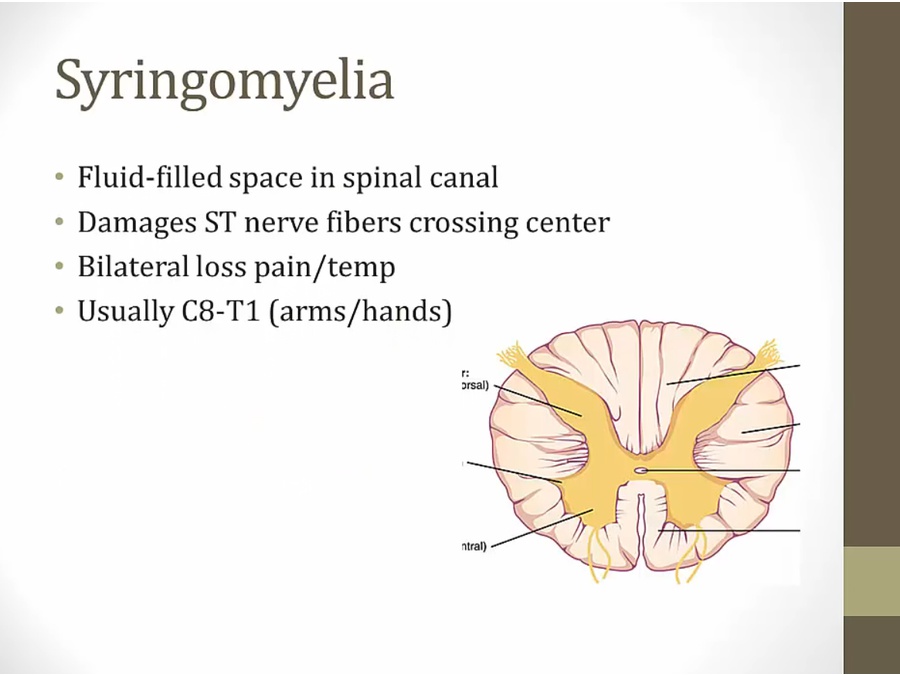
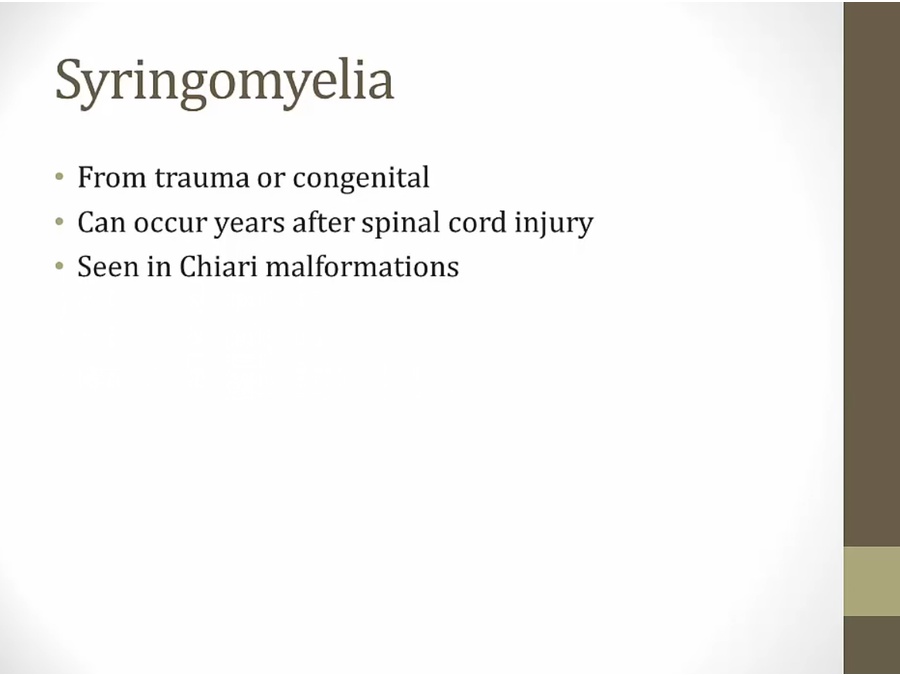
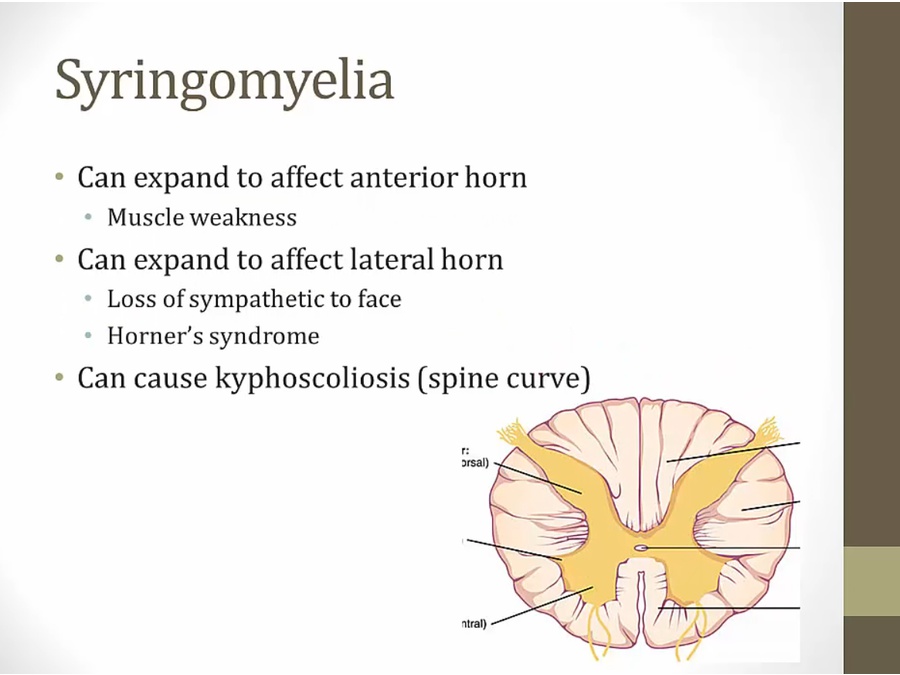
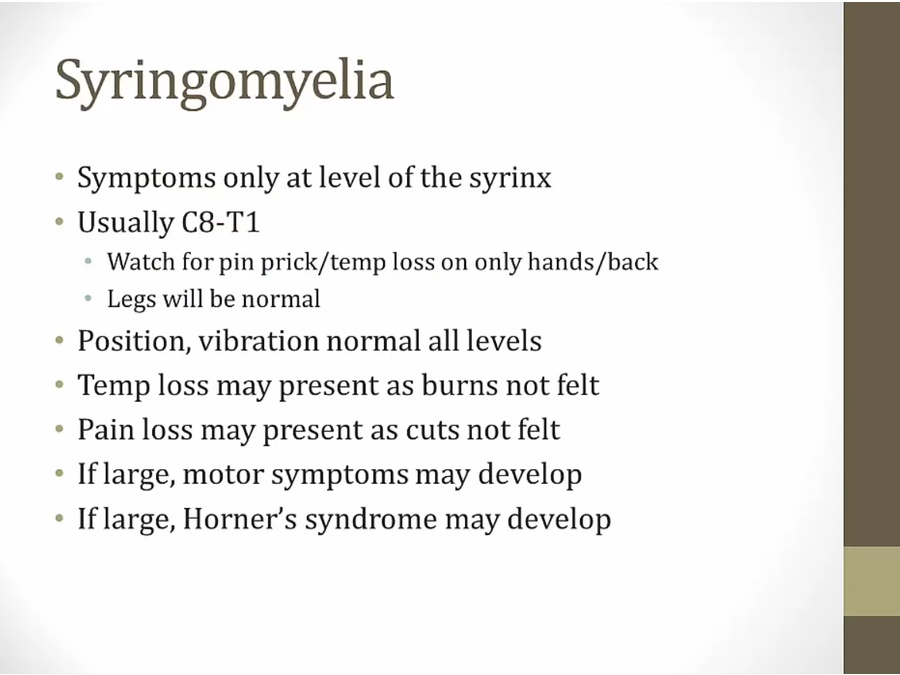
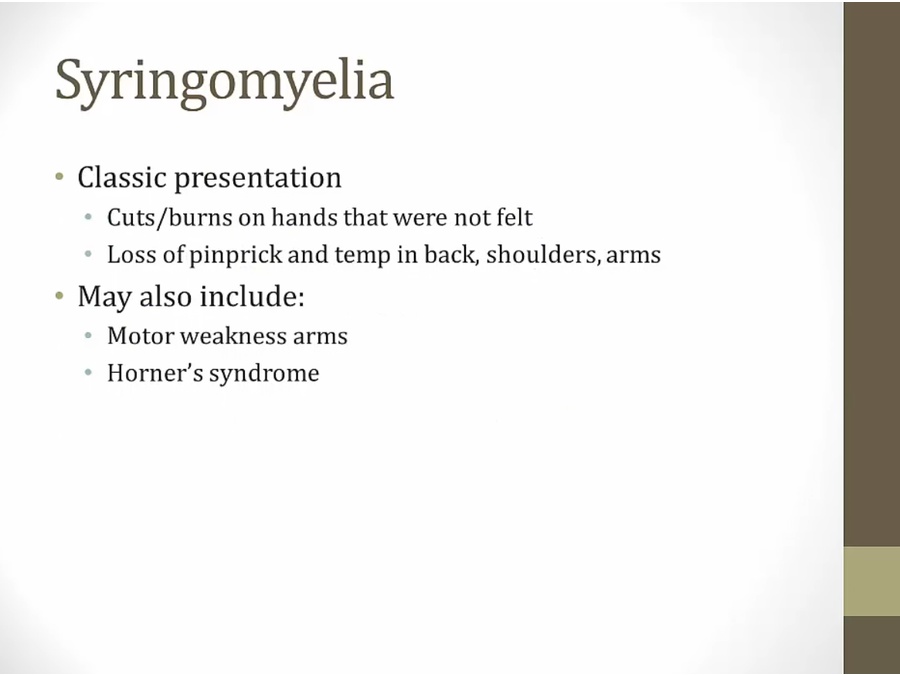
- Central cord syndrome (CCS) typically occurs with hyperextension injuries in elderly patients with pre-existing degenerative changes in the cervical spine.
- Can also be from whiplash injury from MVA
Subacute Combined Degeneration
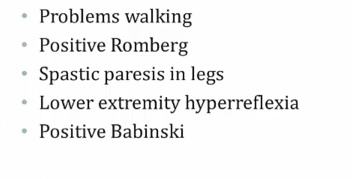
.
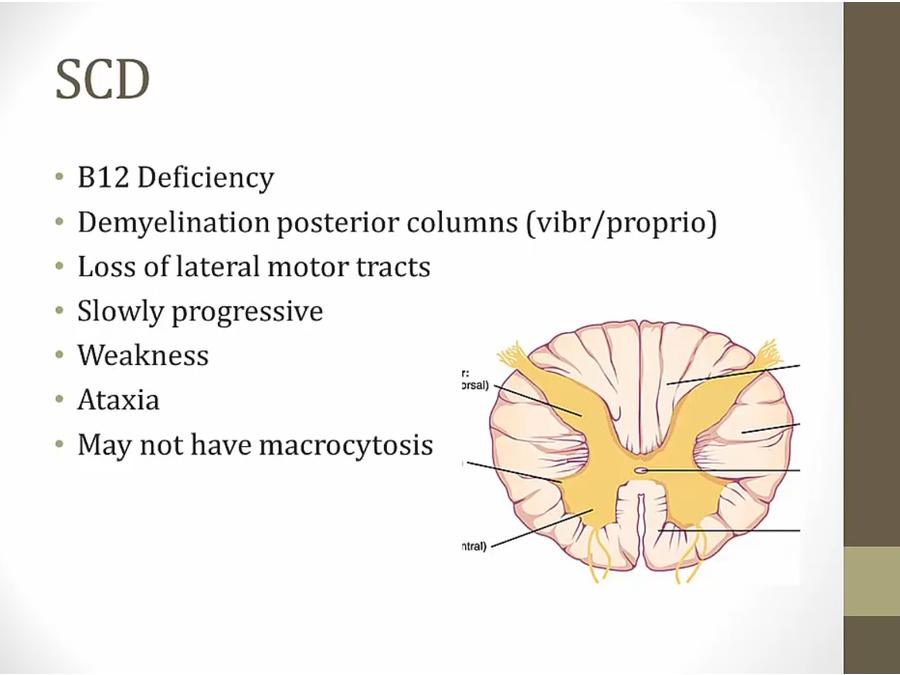
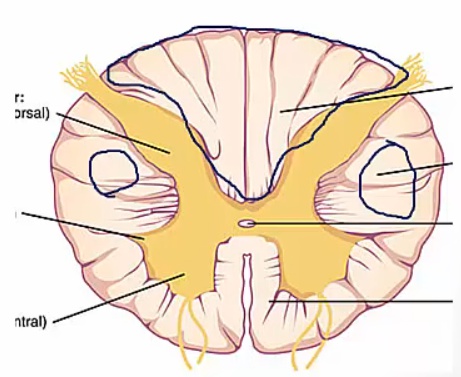
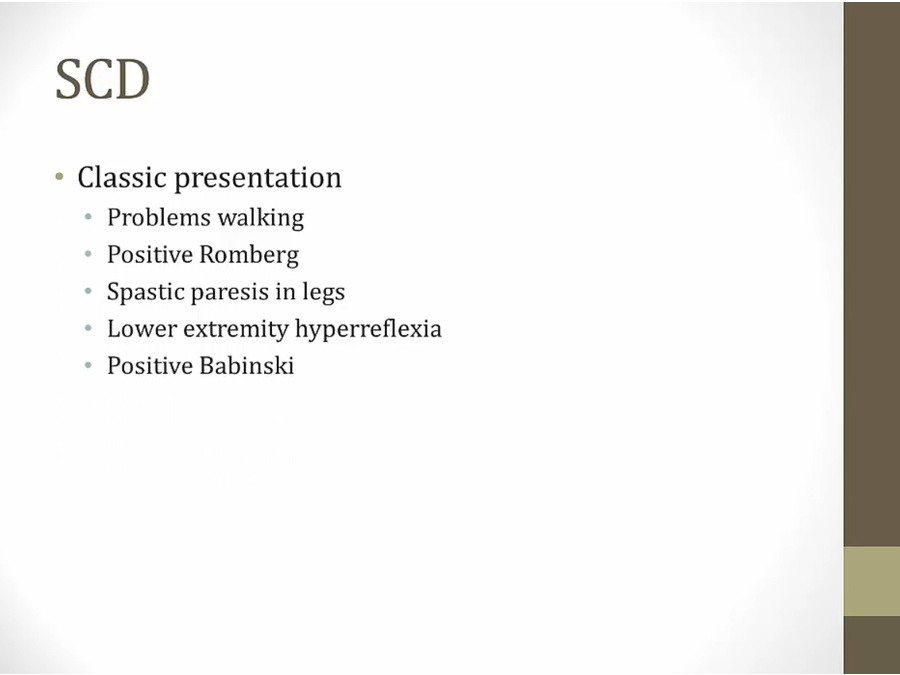
- Tabes Dorsalis plus UMN symptoms
Brown Sequard
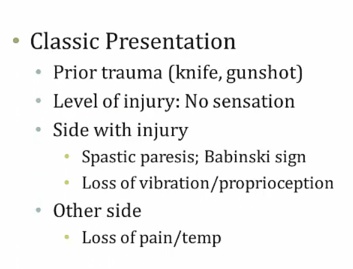
.
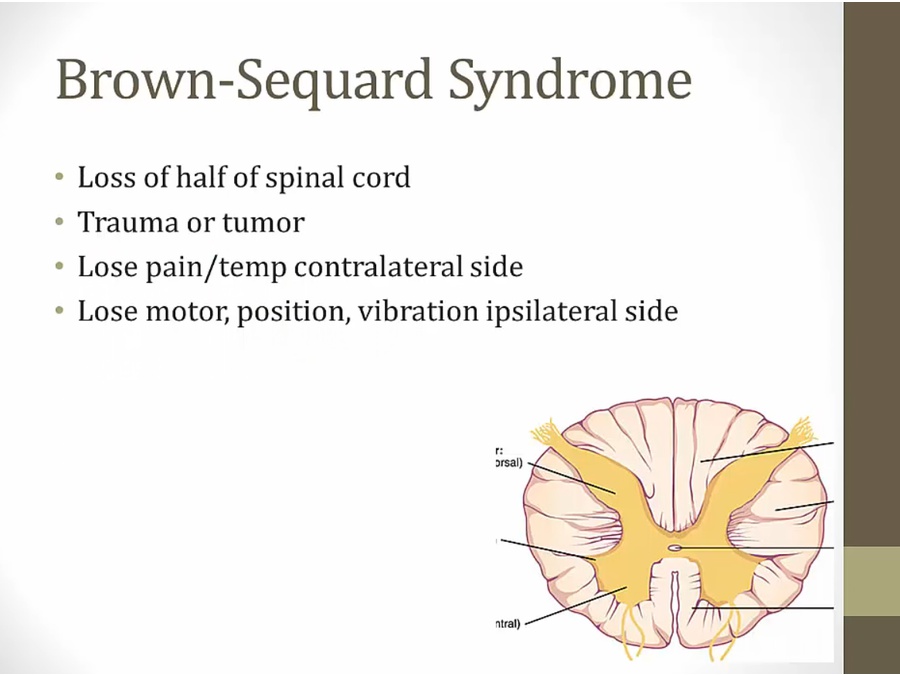
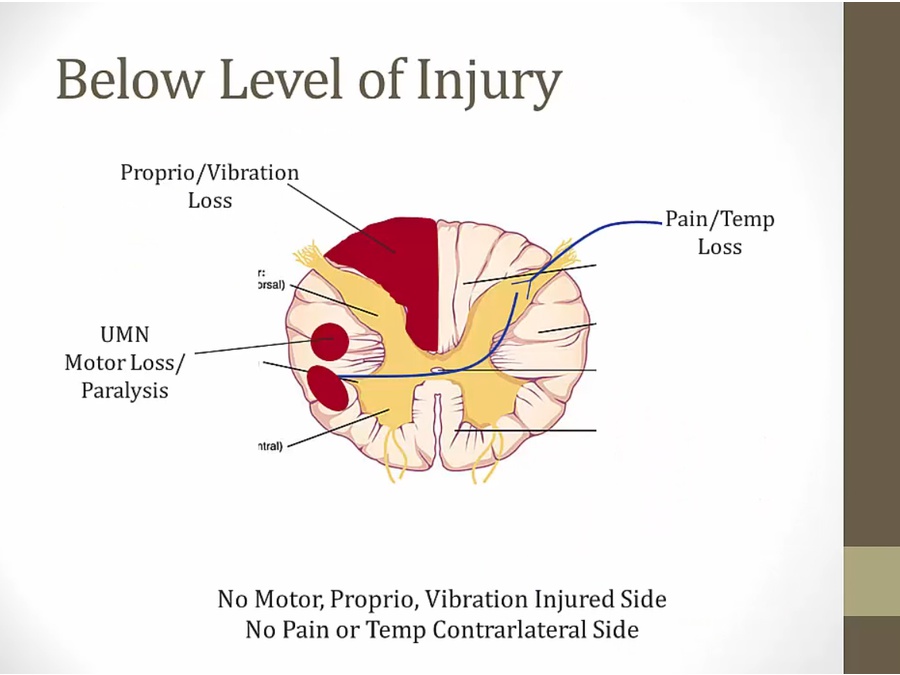
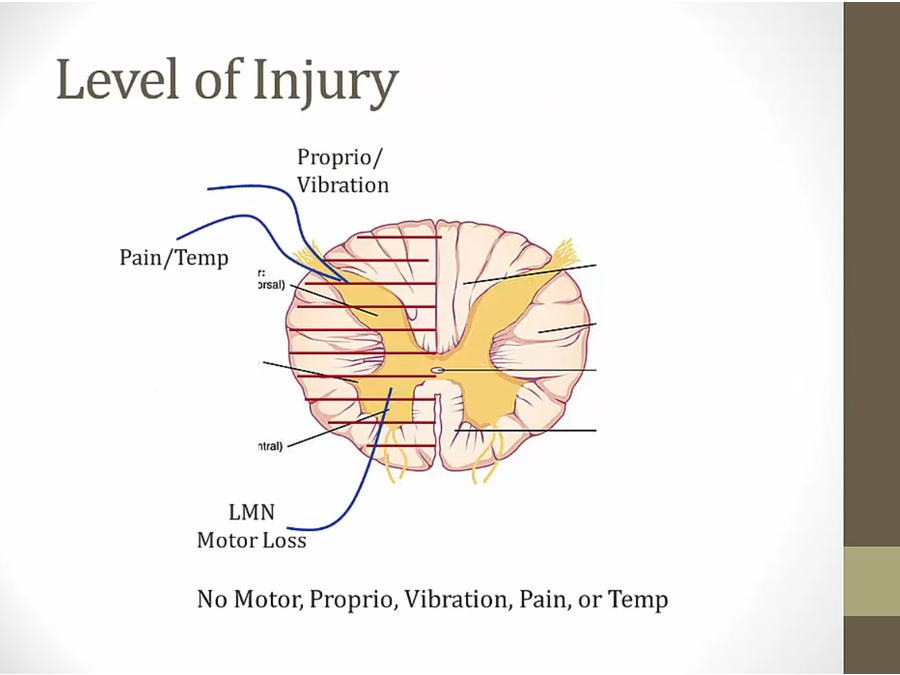
- complete sensory loss
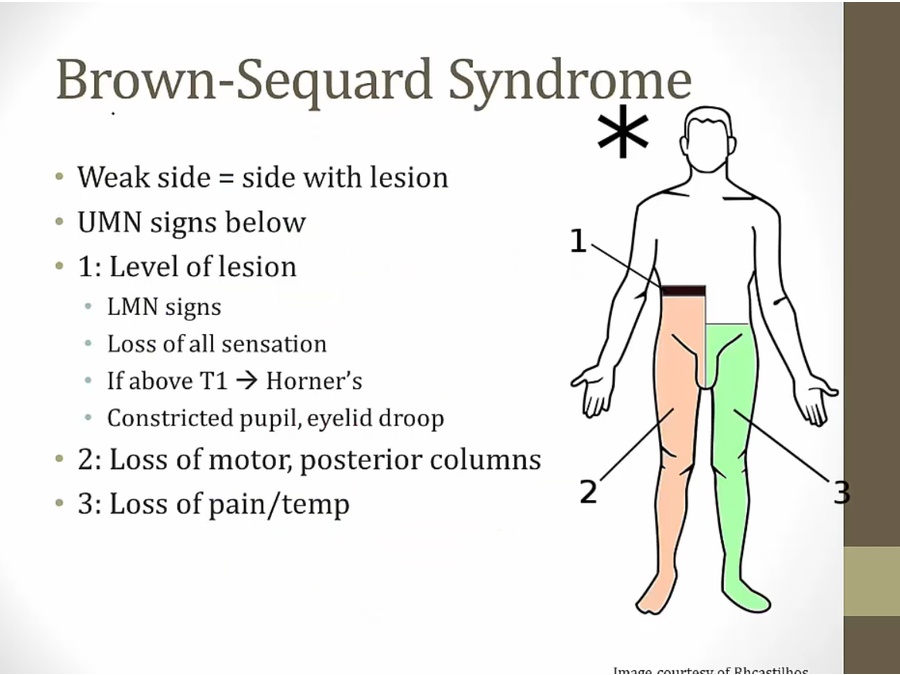
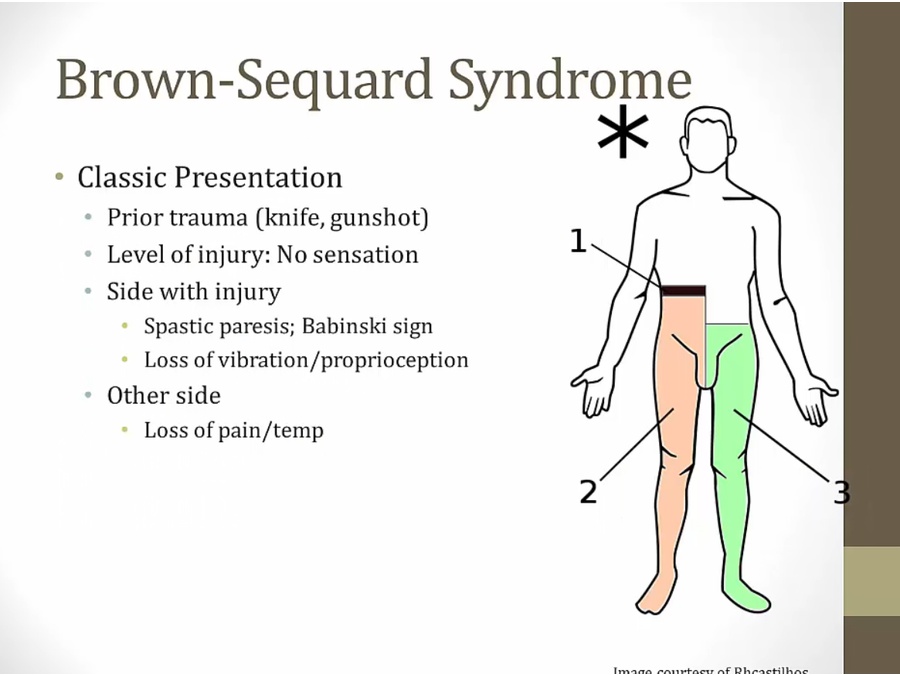
Cauda Equina
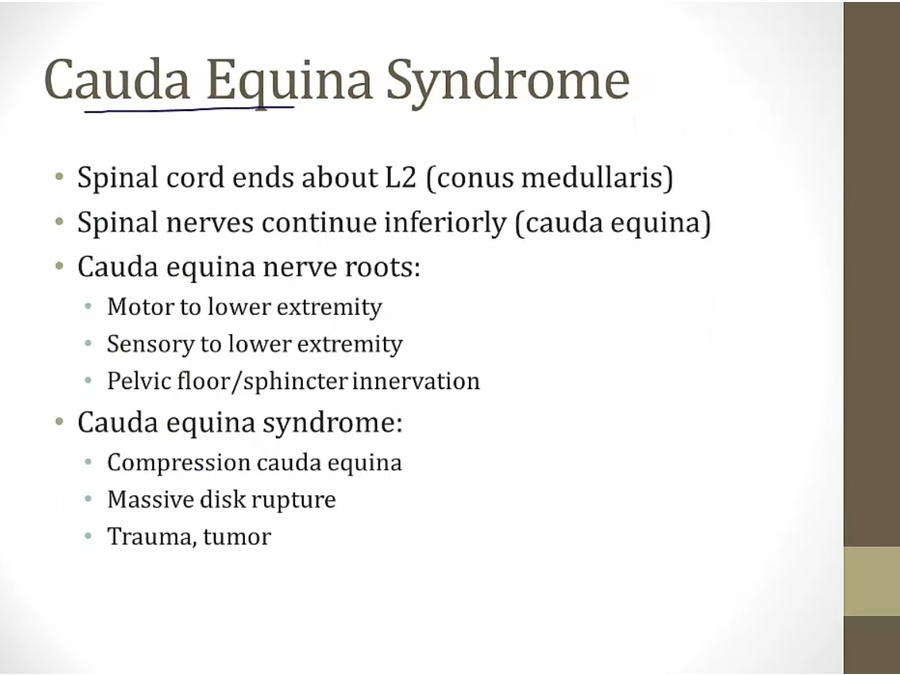
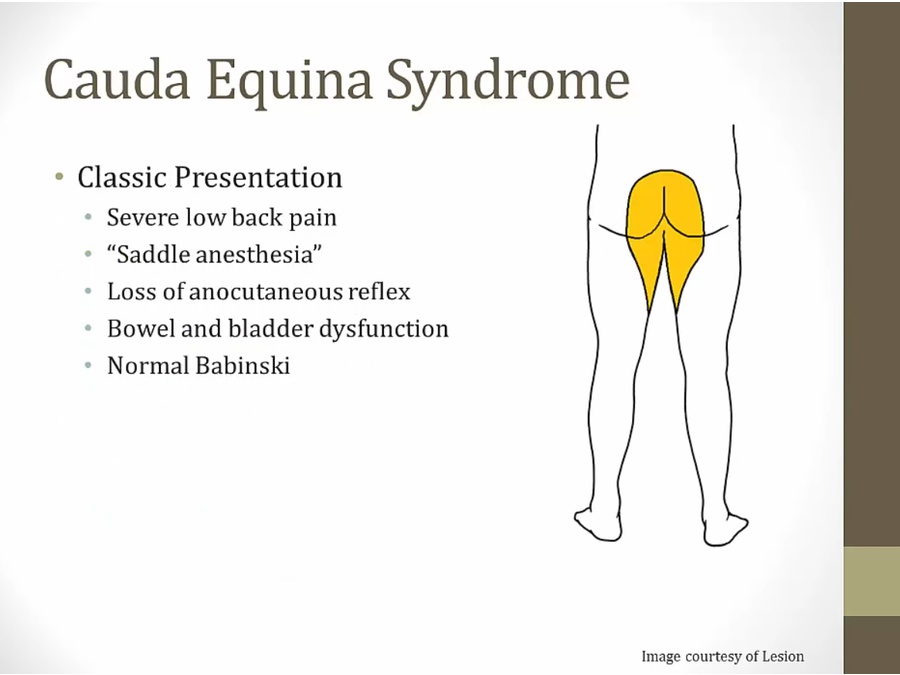
- normal babinski because nerves in cauda equina are LMN, not UMN
Conus Medullaris
Links to this note
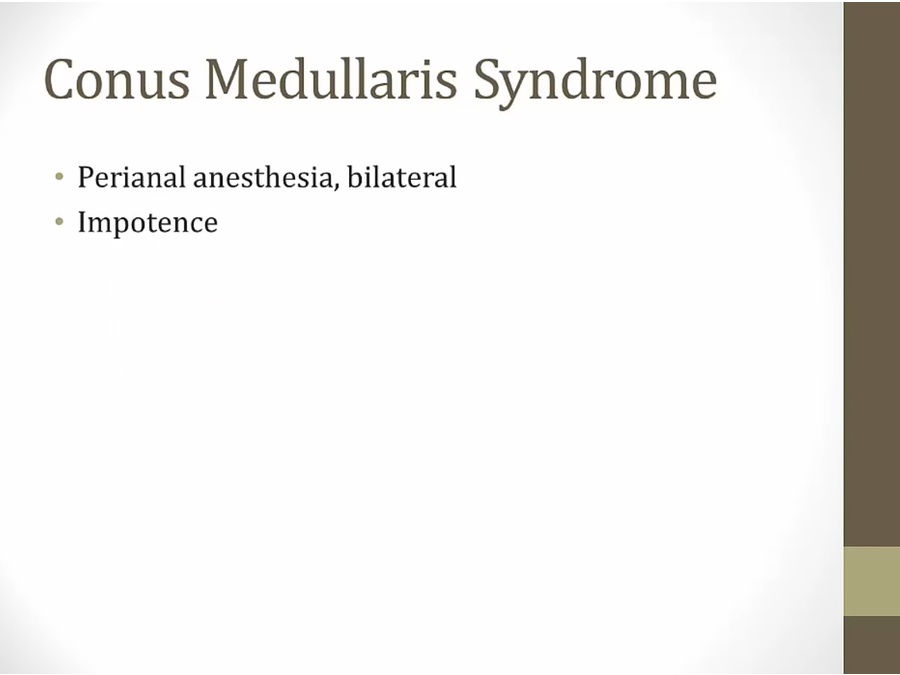
Overview
| Disease | Location | Symptoms |
|---|---|---|
| Polio | ventral horn | loss reflex, LMN signs |
| MS | Varies | Varies |
| ALS | corticospinal, ventral horn | UMN/LMN |
| ASA Occlusion | all spinal cord, no DCML | LMN signs, DCML intact |
| Syphillis | DCML, dorsal root | loss reflex, gait, +Romberg, pupil, strength intact |
| Syringomyelia | White commissure | Pain/temp bilateral |
| B12 deficiency | DCML, corticospinal | UMN, ataxia, |
| Brown Sequard | ||
| Cauda Equina | LMN signs, saddle anesthesia | |
| Conus Medullaris | UMN, saddle anesthesia, impotence |